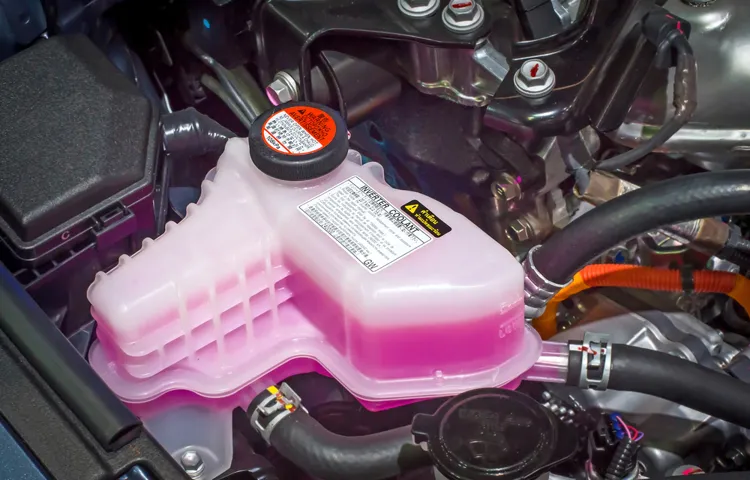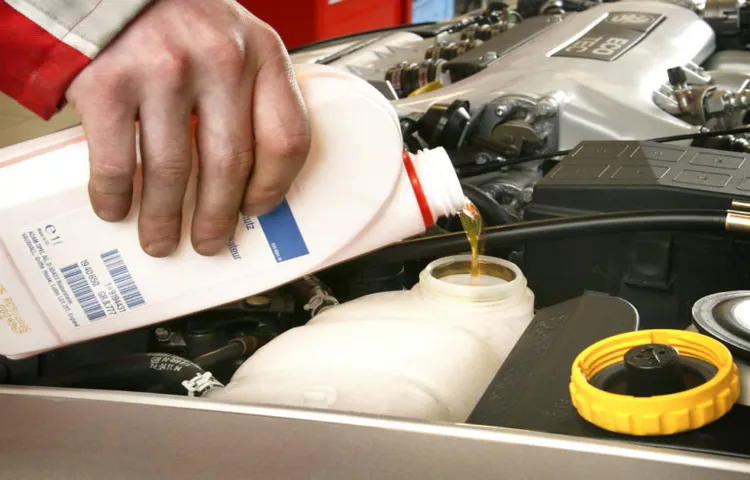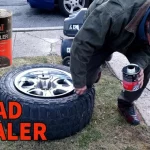That annoying little coolant light on your car dashboard can be a real pain, can’t it? You’ve got places to go, things to do, and all of a sudden, your car is telling you that you need to pull over and check the coolant level. But why is this happening? Is it a sign of a serious problem, or just a glitch in the system? Fear not, because we’re here to help you get to the bottom of this coolant conundrum. Firstly, it’s important to understand what your car’s coolant actually does.
Essentially, it helps to regulate your engine’s temperature by absorbing heat and then cooling it down as it circulates through your car’s cooling system. If your coolant level is low, this can cause your engine to overheat, which can lead to serious damage if left unchecked. There are a few reasons why your coolant light may be coming on.
It could be something as simple as a loose or damaged cap on your coolant reservoir, or a leak somewhere in your system. In some cases, it may be an issue with the coolant temperature sensor, which can trigger the light to come on even when there are no actual problems with your coolant levels. So, what should you do if your coolant light comes on? Firstly, don’t panic.
Try checking your coolant level and see if it’s below the recommended level. If it is, top it up with the appropriate coolant for your vehicle. Make sure to check for any leaks or damage around the reservoir and hoses.
If you can’t see anything obvious, it’s best to take your car to a mechanic to have it checked over. In conclusion, your car’s coolant system is an important part of keeping your engine running smoothly. If your coolant light comes on, it’s definitely worth investigating to avoid any potential damage to your engine.
Remember to stay calm, check your levels, and seek professional help if needed.
Table of Contents
What is the Coolant Light?
If you’re wondering why your coolant light keeps coming on, there could be a few different reasons. Essentially, your coolant light indicates that the engine is running too hot, which could be due to a lack of coolant. This could be caused by a leak somewhere in the cooling system, a defective radiator cap, or a malfunctioning thermostat.
It’s important to address this issue promptly as overheating can lead to serious engine damage. Additionally, ignoring a coolant leak can also lead to costly repairs down the line. So, the next time your coolant light comes on, be sure to take it seriously and address the underlying issue as soon as possible to keep your engine running smoothly.
Explanation of the Function and Purpose of Coolant Light
The coolant light is a crucial indicator that comes on when the engine coolant level drops below a certain level. It is a signal that there is something not quite right with the cooling system, leading to potential engine overheating and damage. The coolant light is typically situated on the dashboard and is represented by an image of a thermometer inside a wave line.
When this light comes on, it is essential to diagnose the root cause and take necessary action. One common cause of the warning light is a leak in the cooling system, resulting in the loss of coolant. This can be caused by a damaged hose, radiator, or water pump.
Other reasons for the coolant light to come on include problems with the thermostat or overheating caused by a blocked radiator. In conclusion, keeping an eye on the coolant light and taking immediate action can prevent severe engine damage and keep your vehicle running smoothly on the road.

Possible Causes for the Coolant Light to Come On
If you’re wondering why your coolant light keeps coming on, there could be several possible causes. One common reason is a leak in the cooling system. This could be caused by a damaged radiator, a broken hose, or a faulty water pump.
Another possible cause is a malfunctioning thermostat, which could result in an overheating engine that triggers the coolant light. Additionally, a low level of coolant or a dirty coolant system could also cause the light to come on. It’s important to address this issue promptly, as overheating can lead to serious engine damage.
Checking your coolant levels regularly and bringing your car to a mechanic if the coolant light comes on can help prevent any further issues.
Low Coolant Level
If you’re driving and the coolant light suddenly comes on, it’s important not to ignore it. One of the most common causes of a coolant light coming on is low coolant level. This can happen if there’s a leak in the cooling system, or if the coolant hasn’t been topped up in a while.
To check your coolant level, pop open the hood and look for the coolant reservoir. The level should be between the min and max marks. If it’s below the minimum mark, you’ll need to add more coolant.
It’s important to use the right type of coolant for your car, so check your owner’s manual or ask a mechanic if you’re not sure. Always make sure your engine has cooled down before adding more coolant, as hot coolant can cause serious burns. Once the coolant level is topped up, check for any leaks in the cooling system.
If you notice any leaks or your coolant level keeps dropping, it’s important to get your car checked out by a mechanic. Ignoring low coolant levels can cause serious damage to your engine.
Faulty Coolant Temperature Sensor
One possible cause for the coolant light to come on is a faulty coolant temperature sensor. This sensor plays a critical role in your car’s cooling system by measuring the temperature of the coolant flowing through the engine. If the sensor is defective or malfunctions, it can send incorrect temperature readings to the car’s computer, triggering the coolant light to turn on.
This could lead to overheating, which in turn could cause serious engine damage. If you suspect that the coolant light is on due to a faulty temperature sensor, you should have it checked by a professional mechanic. They can perform a diagnostic test to determine the exact cause of the issue and repair or replace the faulty sensor.
Remember, it’s always better to be safe than sorry when it comes to the health of your engine.
Leaking Coolant System
A leaking coolant system can be a serious problem for your vehicle. One of the most common causes for the coolant light to come on is a low coolant level. The coolant system is designed to keep your engine cool by circulating coolant fluid through the engine block and radiator.
A leak in the system can cause the coolant level to drop, which can result in engine overheating or damage. The most common causes of a coolant system leak include a damaged radiator, a cracked engine block, or a blown head gasket. If you notice any signs of a coolant leak, such as low coolant levels or overheating, it is important to have your vehicle inspected by a qualified mechanic as soon as possible.
Ignoring the problem can lead to costly repairs or even engine failure. Regular maintenance and inspections can help prevent these issues and keep your vehicle running smoothly.
Consequences of Ignoring the Coolant Light
If you are constantly wondering, “Why does my coolant light keep coming on?”, it is crucial that you do not ignore it. Ignoring the warning sign could lead to serious consequences for your vehicle. Coolant plays a crucial role in regulating the temperature of your engine and preventing it from overheating.
If your coolant light keeps coming on, it is a clear indication that there is a problem with the coolant system, such as low coolant levels, a leak, or a malfunctioning sensor. Ignoring the issue could result in extensive engine damage, such as a blown head gasket or a cracked engine block, which can be costly to repair. Therefore, it is crucial that you address the problem promptly to prevent any further damage from occurring.
So, the next time your coolant light comes on, take it seriously and have your vehicle inspected by a professional as soon as possible to keep your engine running smoothly and efficiently.
Engine Overheating
Engine overheating can lead to serious consequences if left ignored, particularly when it comes to the coolant light. The coolant light serves as a warning that your engine is running too hot or that the coolant level is low. Ignoring this warning may cause several issues such as cylinder head cracks, blown head gaskets or even complete engine failure.
These consequences can cost you a fortune in repairs, not to mention the potential dangers of being stranded in the middle of nowhere. Think of your car’s coolant light as a fever indicator. You wouldn’t ignore a fever in your body if you felt one, so why would you ignore a warning in your car? Make sure to take care of your car’s cooling system, and keep an eye on the coolant light.
Regularly checking the coolant level and refilling it when it’s low, along with proper maintenance of the cooling system, can go a long way in preventing an engine overheating disaster.
Blown Head Gasket
Ignoring the coolant light in your car can lead to a blown head gasket, and that is not something you want to deal with. A blown head gasket is a major engine problem that requires costly repairs and can even cause irreversible damage to your engine. It occurs when there is a breach in the seal between the engine block and the cylinder head, allowing coolant and oil to mix, which can cause severe overheating, loss of power, and even engine failure.
This is why it is crucial to take the coolant light seriously and address any issues with the cooling system promptly. Don’t risk the consequences of ignoring it, as the cost of repairs can be much higher than simply taking care of the problem at the onset. Always check your coolant levels and seek professional help when needed to prevent a blown head gasket from causing headaches and disrupting your daily life.
What You Can Do
If your coolant light keeps coming on, there are a number of things you can do to diagnose and fix the issue. First, check your coolant levels by opening your coolant reservoir and topping off the fluid if necessary. If the fluid is low, your coolant light may have turned on as a warning.
Next, check for any leaks in your coolant system. These could be small pinhole leaks that cause a slow drop in coolant levels over time. To find the leak, visually inspect all hoses, clamps, and radiator connections.
Another possible cause of your coolant light coming on is a malfunctioning thermostat. A faulty thermostat can cause temperature fluctuations that lead to your coolant light turning on. If you’ve checked all of these things and your coolant light is still glowing, it’s best to take your car to a trusted mechanic for a full diagnostic to ensure that you identify the root cause of the problem and avoid causing further damage to your vehicle.
Immediate Steps to Take When the Coolant Light Comes On
When the coolant light comes on, it can be alarming and leave you wondering what to do next. The first step is not to panic and safely pull over to the side of the road if you are driving. Once stopped, turn off the engine and allow it to cool down for a few minutes before checking the coolant level.
If the level is low, refill it with a 50/50 mixture of water and antifreeze. Keep in mind that adding water to your coolant mix dilutes it, so it’s important to have your car serviced as soon as possible to prevent any further issues. Driving with low coolant levels can lead to further engine damage and even the possibility of overheating.
Remember, regular maintenance such as fluid checks and tune-ups can help prevent these problems from occurring in the first place. By taking proactive measures, you can keep your vehicle running smoothly and avoid costly repairs down the road.
Checking and Maintaining Your Coolant System
When it comes to keeping your car in top shape, checking and maintaining your coolant system should be at the top of your list. One of the easiest things you can do is check the coolant levels regularly. You can do this by opening the hood of your car and looking at the coolant reservoir.
It should be at the maximum or minimum level, depending on the make and model of your car. If it’s below the minimum level, add a 50/50 mixture of coolant and water. Another important thing to do is to check for any leaks in the system.
You can do this by looking for any puddles of coolant underneath your car or by checking the radiator hoses for cracks or leaks. In the event of a leak, it’s important to fix it as soon as possible to avoid any further damage to your car. By performing these regular checks and maintenance, you can keep your coolant system functioning properly and avoid any potential issues down the road.
Conclusion
Well, it looks like your coolant light has a knack for being the center of attention! Maybe it just wants to remind you to give your car some TLC by checking and topping off the coolant regularly. Or perhaps it’s just playing a game of “red light, green light” with you. Either way, keeping an eye on your coolant levels and addressing any issues promptly can help keep your engine running smoothly and your coolant light from hogging all the spotlight.
“
FAQs
What does it mean when the coolant light comes on?
The coolant light indicates that there is an issue with the level or temperature of your engine coolant.
How often should I check my engine coolant level?
It is recommended that you check your engine coolant level at least once a month to ensure it is at the proper level.
What should I do if the coolant light comes on while driving?
Pull over to a safe location, turn off the engine and allow it to cool down. Check the coolant level and add more if necessary. If the problem persists, seek professional assistance.
Can driving with low engine coolant cause damage to my car?
Yes, driving with low engine coolant can cause your car to overheat and potentially cause damage to the engine. It is important to address any coolant issues as soon as possible.
What are some common reasons for the coolant light to come on?
Some common reasons include low coolant levels, a coolant leak, a malfunctioning thermostat, or a faulty coolant sensor.
How can I prevent the coolant light from coming on?
Regularly check your engine coolant level, keep up with routine maintenance, and address any coolant issues immediately to help prevent the coolant light from coming on.
Can I continue driving if the coolant light comes on?
It is not recommended to continue driving with the coolant light on, as it may lead to engine damage. Pull over to a safe location and address the issue as soon as possible.



